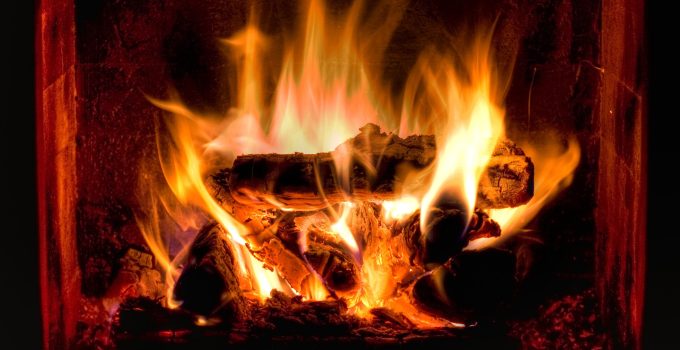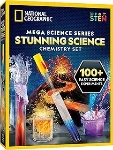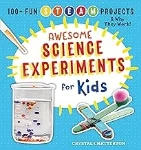⛏️Break It Down
- What Is a Chemical Change?
- What Happens When Wood Burns?
- Why Is Burning Wood a Chemical Change?
- Signs That a Chemical Reaction Is Happening
- Can You Reverse It?
- Real-Life Uses of Combustion
- 🎯 Final Thoughts
- 📚 References
What Is a Chemical Change?
A chemical change happens when one or more substances turn into something new. The molecules rearrange, and the change usually can’t be reversed. This is different from a physical change, like melting or cutting, where the substance stays the same.
🧪 According to the American Chemical Society, chemical changes involve the making and breaking of chemical bonds, forming new substances with new properties.
What Happens When Wood Burns?
When wood catches fire, it goes through a process called combustion. This is a chemical reaction where wood reacts with oxygen from the air. The reaction produces:
- Carbon dioxide (CO₂) – a gas you exhale
- Water vapor
- Ash – the leftover minerals
- Smoke and soot – tiny particles and gases
- Heat and light
The chemical equation (simplified) looks like this:
Wood (cellulose) + O₂ → CO₂ + H₂O + ash + energy
Interesting Tidbit 🔥 According to the US Energy Information Administration, in 2020, ~ 11 million used wood for energy. About 2.2 million households used wood as the main space-heating fuel.
Why Is Burning Wood a Chemical Change?
Burning wood is a chemical change because it creates new substances that are completely different from the original wood:
- You can’t turn ash back into wood.
- Carbon dioxide and water vapor escape into the air.
- The process gives off heat and light, showing that energy was released.
That means the original wood has been permanently transformed—a sure sign of a chemical change.
🌡️ According to Resourses Magazine, 2 billion people in developing countries rely primarily on wood and other forest products for their daily cooking and heating needs.
Signs That a Chemical Reaction Is Happening
Here are key signs that tell you a chemical change is taking place when wood burns:
- Heat is produced (it gets hot)
- Light is given off (you see flames)
- Smoke appears (gas is released)
- Color change (wood turns black or white)
- A new substance forms (ash)
These are all indicators of a chemical reaction.
| Sign of Reaction | Burning Wood Example |
|---|---|
| Heat | Fire gets hot |
| Light | Flames appear |
| Gas | Smoke and carbon dioxide |
| Color Change | Wood darkens and chars |
| New Substance | Ash remains after burning |
🔬 Scientists at Science Learning Hub note that if the fuel, in our case wood, isn’t dry enough, it won’t burn. The less moisture in the fuel, the more likely it will ignite and burn.
Can You Reverse It?
No—you can’t get the original wood back once it’s been burned. That’s because:
- The chemical structure has changed
- Gas has escaped into the air
- Energy has been released
Reversibility is a main way to tell chemical changes apart from physical changes like melting or freezing.
♻️ According to BBC Bitesize, chemical changes like burning are “irreversible,” meaning they can’t be undone.
Real-Life Uses of Combustion
Burning wood is one example of combustion, which is used in many areas of life:
- Heating homes (fireplaces and wood stoves)
- Cooking food (campfires, grills)
- Producing energy (burning biomass)
- Creating charcoal (controlled burning)
🌍 The National Renewable Energy Laboratory explains that wood is still an important renewable energy source in many parts of the world. Source
🎯 Final Thoughts
So, is burning wood a chemical change? Absolutely. The fire transforms wood into ash, smoke, and gas—new substances that didn’t exist before. This process is permanent, powerful, and packed with science. Every campfire, fireplace, or bonfire you see is a glowing example of chemistry in action.
📚 References
- 💻 American Chemical Society. “What is a Chemical Reaction?” https://www.acs.org/middleschoolchemistry/lessonplans/chapter6/lesson1.html
- 💻 US Energy Information Administration. “Wood and Wood Waste.” https://www.eia.gov/energyexplained/biomass/wood-and-wood-waste.php
- 📖 Resources Magazine. “Wood Energy in Developed Economies: An Overlooked Renewable.” https://www.resources.org/archives/wood-energy-in-developed-economies-an-overlooked-renewable/
- 💻 Science Learning Hub. “Fire Behaviour.” https://www.sciencelearn.org.nz/resources/763-fire-behaviour
- 💻 BBC Bitesize. YouTube Video “Irreversible Changes.” https://youtu.be/bHlP1lRc0Tg
- 💻 National Renewable Energy Laboratory. “Biomass Energy Basics.” https://www.nrel.gov/research/re-biomass
Related Products
Stunning Chemistry Set – Mega Science Kit with 100+ Easy Experiments
This kit includes all materials needed to conduct 15 stunning chemistry experiments, including building an underwater volcano, create a geyser, and more! Plus a bonus experiment guide with 85+ additional experiments that can all be done with common household items.
Awesome Science Experiments for Kids: 100+ Fun STEM / STEAM Projects and Why They Work
The ultimate science experiment book for kids! 100+ hands-on projects to get kids ages 5 to 10 excited about science.
📌 Learn More About Chemical Reactions
- What Is a Chemical Reaction?🔥20 Real Life Examples That Prove Chemistry Is All Around You
- What Happens If You Mix Baking Soda and Vinegar? 🧪The Science Behind the Fizz
- What Makes a Glow Stick Glow?🔥The Cool Chemistry Behind the Glow in the Dark Magic
- What Makes Fireworks Colorful? 🎆 The Chemistry That Lights Up the Sky
- Why Does Iron Rust Over Time? 🌧️ The Science of Metal Decay Uncovered


